
It is not especially necessary to convince you about the advantages of system integration. Common dictionaries, unified reporting, cheaper and more efficient management of the company’s resources – these are only some of the advantages.
The idea is simple: we want to make all remaining systems to be aware of every bit of information and every event recorded in any IT system in the enterprise, as long as this information is important for the operation of the business or for making decisions.
Therefore, integration has to include the scope of exchanged data, their form, frequency and resolve possible conflicts, as well as to adjust this data to the specificity and needs of individual systems.

INTENSE Platform lets you configure the integration environment in the system, where it is one of the data sources and in a system where it does not exist as the source system.
The assumed architecture of the solution and common protocol (http/SOAP) provide independence from the technologies of combined systems, and the use of the XML standard provides great flexibility. Thanks to application adapters (which can be prepared by independent suppliers) it is possible to connect almost all software to the bus.

Integration of systems in a “peer-to-peer” system means that for n systems one has to prepare n(n-1)/2 links. For example, for 5 data sources to cooperate, up to 10 links have to be handled.
In the case of using a data bus, every source communicates only with it; therefore, we need n links. For the example 5 sources there will be 5 interfaces.
Along with the increase in the number of combined systems, this difference increases, and the use of the bus lets you achieve great savings.
On the other hand, using the data bus to integrate only 2 systems may turn out to be unjustified in business terms.
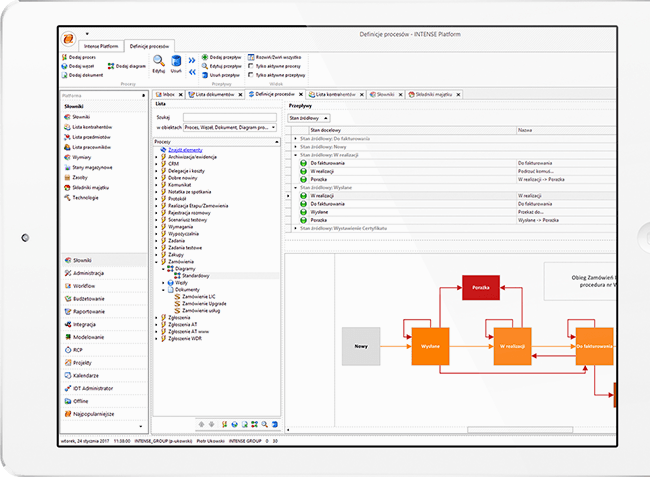
The use of INTENSE ESB data bus means making the format and principles of data exchange common. Every system introduced to integration is subjected to the same rules, well defined and described. Therefore, not only is the preparation of integration much easier but, first and foremost, its subsequent management is more efficient and cheaper.
Under the assumed work model, INTENSE ESB system is adjusted to efficiently support the exchange of 30 million objects per year. This number can be increased by the appropriate selection of equipment and making the work of the system parallel.
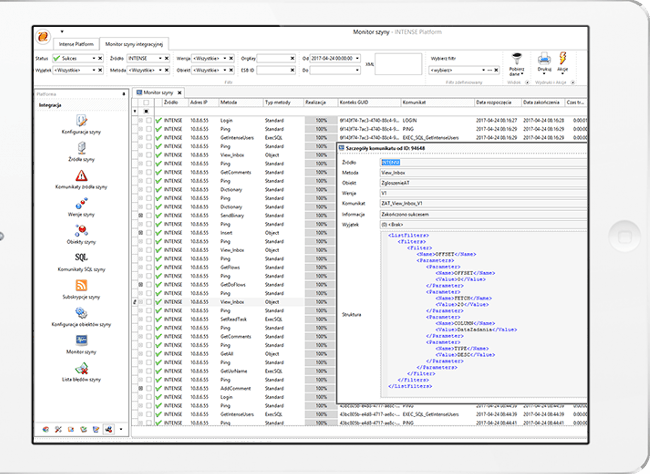
INTENSE ESB provides the efficient mechanism of versioning the interfaces of data exchange between the systems, along with the management of introducing changes.
If it is necessary to extend the scope of the exchanged information, there is no need to rewrite all integrations to the new format. They can operate in the old system until it is sufficient in business terms.
The structure of the support of interfaces versioning also facilitates the implementation of changes in the production environment and, in particular, it makes it possible to switch to the new version without stopping system operation.
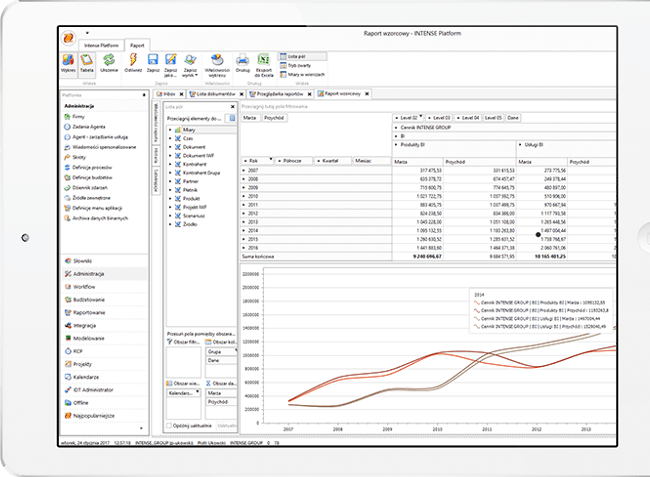
In complex, multi-system environments, the replacement of one program with another (and also even the installation of a new version) is extremely cumbersome. It also means the rewriting of all interfaces to other systems and their replacement at the same time.
In the case of using the ESB class solution, such a change is much simpler, cheaper and safer. It is required to define the connection of the new system with a data bus, which will ensure failure-free cooperation with the remaining environment, for which the entire operation may be even unnoticeable. ESB cuts off the network of individual inter-system connections, taking over all communication issues.
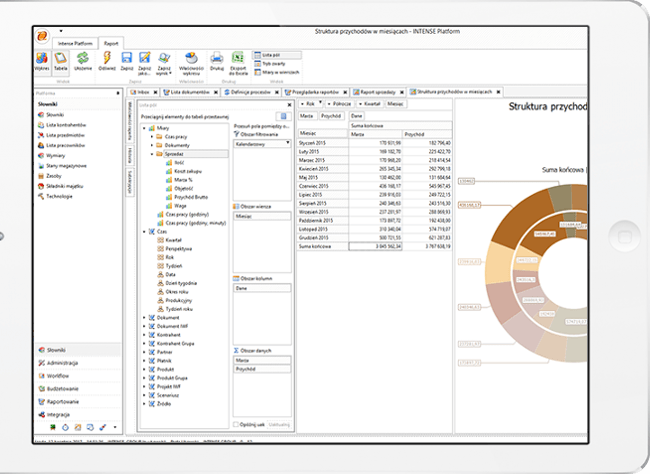
Usually, many systems and many objects in them are subjected to integration. Thousands, in complex cases even millions of operations require good control tools.
INTENSE ESB Monitor ensures constant monitoring of the bus operation, automatic notifications about cases exceeding the defined norms and the possibility to trace the history of all operations.
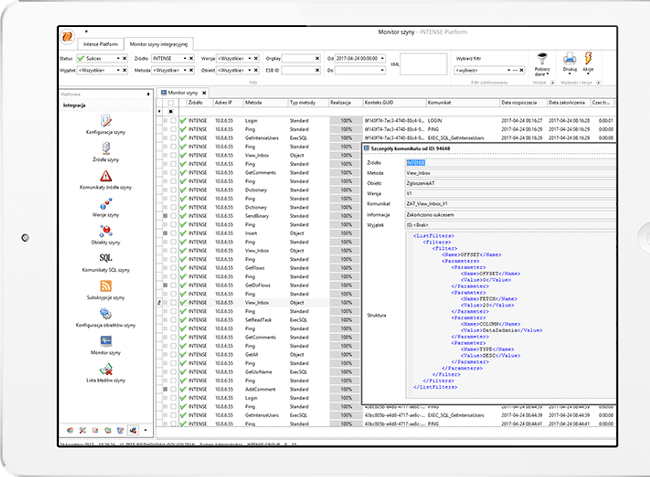
The idea of ESB data bus assumes that any systems that meet the requirements within the scope of data exchange protocol support can be subjected to integration. Therefore, the range of applications is almost unlimited. INTENSE Platform was used, among others, to:
The most frequently performed integrations with ERP systems: SAP ERP, Microsoft Dynamics AX, Microsoft Dynamics NAV, Comarch ERP XL, Comarch ERP Optima, Enova, SAGE, REKORD.ERP and others.